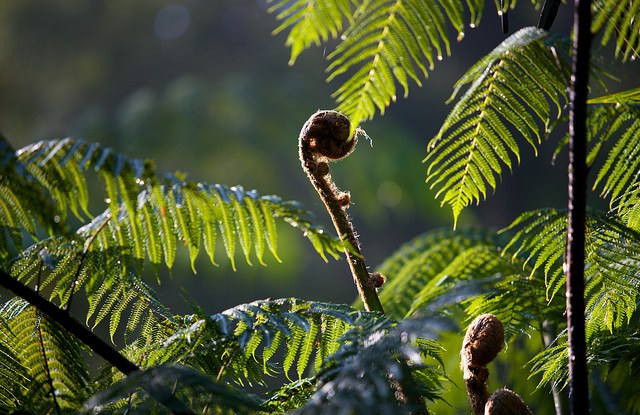
BOGOR, Indonesia — It’s a propitious time for climate change adaptation.
Climate talks in Bonn in June seemed to open the door to formally linking strategies for adaptation with mitigation measures, and a growing body of evidence is showing that linking the two methods is integral to the success of both.
Add a new study in Cameroon to the list. In a paper published earlier this year, researchers in the Central African country showed that efforts to mitigate global warming by curbing deforestation can no longer be conducted separately from measures to help people adapt to a degree of inevitable climate change.
“We wanted to demonstrate practically that adaptation can be linked to mitigation, starting from the activity level,” said scientist Eugene Loh Chia, a research officer with the Center for International Forestry Research (CIFOR) and lead author of the study, “Forest–climate nexus: linking adaptation and mitigation in Cameroon’s climate policy process.”
The study drew from observations of two community forest-carbon conservation projects in southern Cameroon implemented by the Centre for Environment and Development (CED), as well as results from CIFOR’s Congo Basin Forests and Climate Change Adaptation (CoFCCA) research project.
As climate change affects weather patterns, cultivation seasons and crop production, experts anticipate that farmers will be compelled to expand arable areas, including by clearing more forests in tropical locations—such as the two communities studied in the Cameroon paper. This would undermine the mitigation projects being implemented there, in which local people get paid to protect the trees from deforestation, thus contributing to the reduction of greenhouse gas emissions.
“In Cameroon, the reduction of greenhouse gas emissions from deforestation and forest degradation (REDD+) dominates climate change action, but we have demonstrated the need to add adaptation as a co-benefit of such mitigation programs,” said CIFOR senior scientist Denis Sonwa, a co-author of the publication who also worked on the CoFCCA project.
Researchers examined activities conducted for the CED projects and found that many contributed to both adaptation and mitigation. For example, improving agricultural practices — including agroforestry — helped communities strengthen their livelihoods in the face of climate change, while reducing the impact of farming on the forest.
“Failing to include adaptation in a project involving farming practices will never be sustainable,” Sonwa said. “We hope that showing the benefits of integrating adaptation and mitigation at the local level can feed into policy-making at the national level.”
Researchers say that the state should play a crucial role in adopting such integrated policies and then advocating for them in international negotiations on global cooperation to tackle climate change. “We must make sure that the logical frameworks used to attribute international funding do not kill opportunities for integration between mitigation and adaptation,” Sonwa said.
DIFFICULTIES REMAIN
The paper identifies multiple challenges to the promotion of such integrated policies. Cameroon’s institutions are currently divided in their approach to climate action, with adaptation and mitigation cutting across multiple and often disconnected sectoral interests, and with crucial underlying issues such as uncertain land tenure remain to be solved. Meanwhile, although the community carbon conservation programs observed did have adaptation co-benefits, “the project proponent, CED, possessed little or no technical know-how to implement and monitor the different activities,” according to researchers, and coordination was insufficient between the various experts needed to conduct them all efficiently.
To overcome those obstacles, researchers recommend deeper participation of local communities as well as multi-institutional and multidisciplinary teams. They also recommend that adaptation and mitigation strategies and activities consider the dual goals of reducing climate change vulnerability and greenhouse gas emissions.
The paper highlights that whenever mitigation and adaptation occur alongside each other, local people are the ones who make it happen.
“On the mitigation side, local communities are the people who monitor whether carbon storage in the forest increases or decreases,” Chia said.
“On the other hand, the same people depend on the forest, and any activity to tackle deforestation should empower them and provide them with resources.”
For more information about the topics of this research, please contact Denis Sonwa at d.sonwa@cgiar.org.
This research forms part of the CGIAR Research Program on Forests, Trees and Agroforestry.
We want you to share Forests News content, which is licensed under Creative Commons Attribution-NonCommercial-ShareAlike 4.0 International (CC BY-NC-SA 4.0). This means you are free to redistribute our material for non-commercial purposes. All we ask is that you give Forests News appropriate credit and link to the original Forests News content, indicate if changes were made, and distribute your contributions under the same Creative Commons license. You must notify Forests News if you repost, reprint or reuse our materials by contacting forestsnews@cifor-icraf.org.
